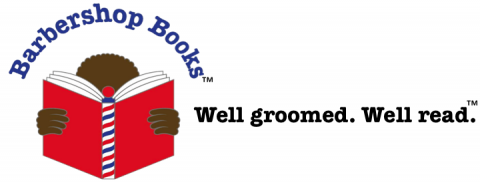Barbershop Books
About
According to the United States Department of Education, more than 85% of America’s black male K-12 students are not proficient in reading. In an increasingly global and knowledge-based economy, poor reading skills among young black boys today will produce millions of black male high school dropouts who are unprepared to compete in the workforce of tomorrow – creating a host of negative life outcomes that cost the U.S. billions of dollars in lost taxes, low wages, crime, and incarceration.
Six key factors contribute to poor reading outcomes among Black boys: (1) limited access to engaging reading material; (2) lack of black men in black boys’ early reading experiences; (3) ineffective reading instruction; (4) lack of culturally competent teachers; (5) early childhood classrooms that fail to incorporate Black boys’ reading preferences; and (6) teachers who are unresponsive to black boys’ individual learning styles.
THE ORGANIZATION
Reading Holiday Project, Inc. is a 501(c)(3) non-profit organization that works to close the reading achievement gap for black boys. Barbershop Books is the organization’s first program.
VISION
All children read for fun.
MISSION
To close the reading achievement gap for young black boys by using child-centered, culturally responsive, and high-impact strategies.
PROGRAM
Barbershop Books is a community-based literacy program that creates child-friendly reading spaces in barbershops for boys ages 4-8. It leverages the cultural significance of barbershops in Black communities to help black boys identify as readers. This innovative approach connects black men and families to black boys’ early reading experiences. It also improves boys’ access to culturally relevant, age appropriate, and gender responsive children’s books, while increasing the amount of time boys read for fun.
CHALLENGE
In an increasingly global and knowledge-based economy, poor reading skills among Black boys today will produce millions of Black men who are unprepared to compete in the workforce of tomorrow – creating a host of negative life outcomes that will cost the U.S. billions of dollars in lost taxes, low wages, crime and incarceration. The following five obstacles are key contributors to low literacy among young Black males:
1. Limited Access to engaging reading material.
A disproportionately high share of New York City’s Black boys live in book deserts, where libraries, bookstores, and reading material at home are scarce. In some of America’s low-income communities, researchers have found only one age-appropriate book for every 300 children. Also, budget cuts to New York Public Libraries have led to reductions in already sparse programming opportunities for children in public libraries.
2. Lack of Black men in Black boys’ early reading experiences.
During the critical period for reading acquisition (pre-K to grade 3), Black men are missing from reading experiences of many Black boys. 72% of Black children live with single-mothers and less than 2% of American teachers are Black males. Black men’s absence is significant because recent social psychology findings suggest that encouragement and modeling from relevant same-sex role models can improve Black boys’ reading self-concept – the extent to which they identify as readers.
3. Ineffective Reading Instruction.
Black boys disproportionately attend under-resourced schools with inexperienced teachers who fail to translate the reading skills students need to know into effective reading instruction. The National Reading Panel’s findings show that explicit reading instruction (explaining and modeling why, how, and when to use specific reading strategies) is highly effective – especially for underserved children who generally start school lacking important foundational literacy skills.
4. Schools Lack Culturally Competent Teachers.
Because public school students’ cultures and communities are unfamiliar to many of their teachers, instances of cultural dissonance, racial bias, and stereotyping have increased substantially. Most Black boys do not attend schools with culturally responsive classrooms, where “effective teaching and learning occur in a culturally-supported, learner-centered context, whereby the strengths children bring to school are identified, nurtured, and utilized to promote student achievement.”
5. Classrooms Don’t Acknowledge or Incorporate Boys’ Reading Preferences.
Many early childhood classrooms use children’s literature that does not match boys’ preferences for nonfiction action texts and books with positive male main characters.
Dickinson, David K, and Susan B. Neuman. (2007). Handbook of early literacy research.Vol.2.Guilford Press 31.
http://faculty.washington.edu/agg/IATmaterials/PDFs/DasguptaEtAl.JESP20…
David Giles. (2013). New York City Public Libraries Open Fewer Hours Thank Libraries in Other Major cities. Next City.
NYC Independent Budget Office. (2014). Demographics and Work Experience: A Statical Portrait of New York City’s Public School Teachers.
Stout, J. G., Dasgupta, N., Hunsinger, M., & McManus, M. A. (2011). STEMing the tide: using ingroup experts to inoculate women’s self-concept in science, technology, engineering, and mathematics (STEM). Journal of personality and social psychology, 100(2), 255.
O’Connor, C., & Fernandez, S. D. (2006). Race, class, and disproportionality: Reevaluating the relationship between poverty and special education placement. Educational Researcher, 35(6), 9. http://edr.sagepub.com/content/35/6/6.short
National Institute of Child Health and Human Development. (2000). Report of the National Reading Panel. Teaching children to read: An evidence-based assessment of the scientific research literature on reading and its implications for reading instruction. Retrieved 7/24/13 fromhttp://www.nichd.nih.gov/publications/pubs/nrp/Pages/smallbook.aspx
Lynn, Marvin, et al. (2010). Examining teachers’ beliefs about African A merican male students in a low-performing high school in an African American school district. The Teachers College Record 112 (1). http://www.blackmaleinstitute.org/pdf/scholarly/Marvin%20Lynn–Black%20male%20attitudes.pdf
The National Center for Culturally Responsive Educational Systems. Culturally Responsive Pedagogy and Practice. Retrieved 7/24/13 fromhttp://www.nccrest.org/professional/culturally_responsive_pedagogy-and…
Husband, Terry. (2012) “Why can’t Jamal read?” Phi Delta Kappan 93(5), 23-27. http://www.kappanmagazine.org/content/93/5/23.abstract


Spread the word